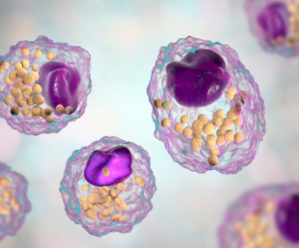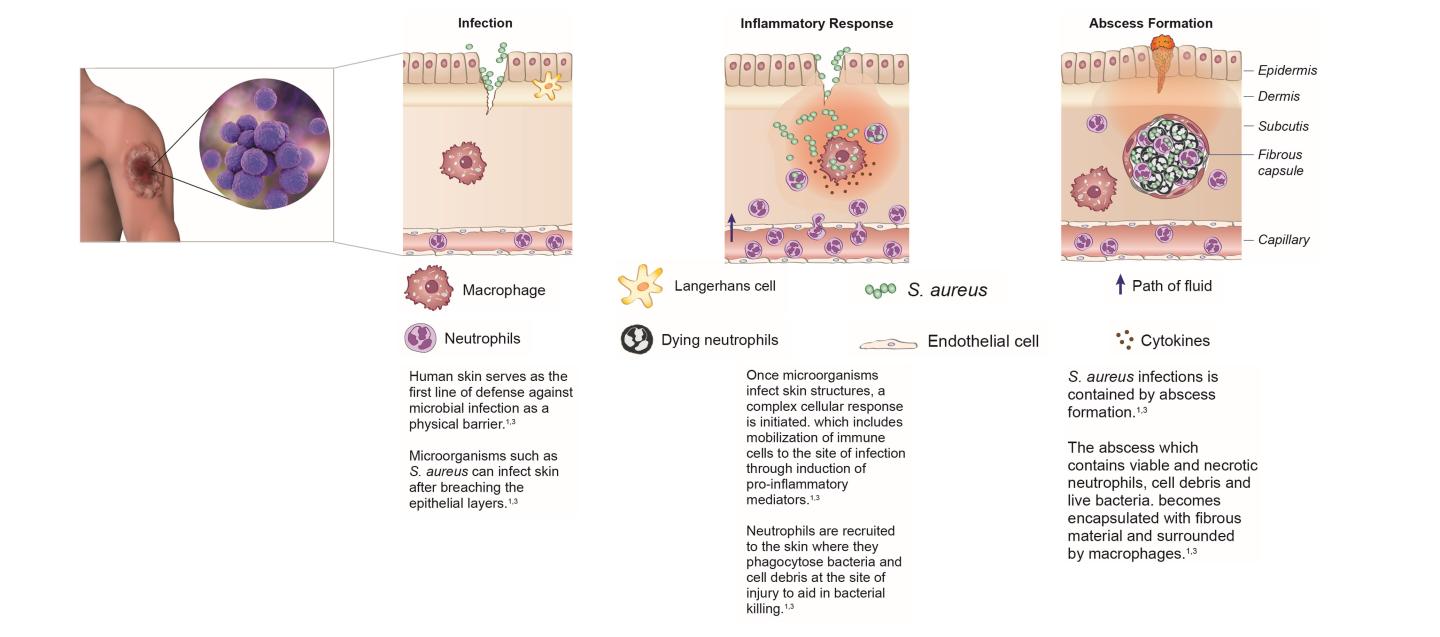The skin serves as the first line of defense against infection by presenting a physical barrier, by secreting sebaceous fluid that inhibits microbial growth and through its own microbiota, which can deter colonization by potentially pathogenic organisms.4 SSTIs can occur following a breach in the protective skin barrier after trauma, surgery or other causes which allows infectious microorganisms to enter.1,2
Once microorganisms infect skin structures, a complex cellular response is initiated, which includes mobilization of immune cells to the site of infection and abscess formation.3,4
Host cell defense mechanisms aid in killing bacteria but may also cause non-specific damage to host tissue. This contributes to the physical signs observed such as redness, edema and/or induration around the site of the infection and formation of pus.1,3

